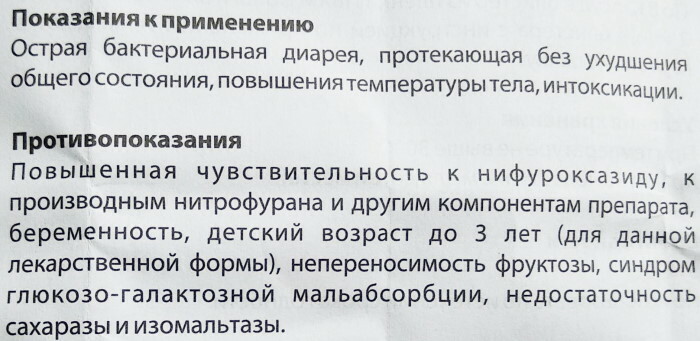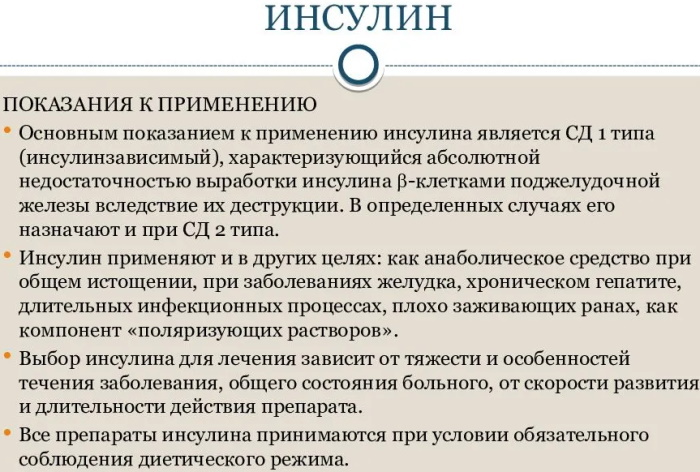Content
- Causes
- Causes of suicide in adults
- Causes of suicide in children and adolescents
- Suicide methods and the consequences of unsuccessful attempts
- Hanging
- Drowning
- Cutting veins and arteries
- Refusal to eat and drink
- Self-immolation
- Poisoning
- Heart injury
- Suicide by firearms
- Falling from height
- Intentionally hitting vehicles and operating mechanisms
- How to get rid of suicidal thoughts yourself
- When do you need to seek help?
- Suicide videos
A beautiful death happens only in the movies. In life, it is pain, dirt, fear and grief of loved ones. When deciding to commit suicide (no matter what method), rarely does anyone think about the consequences, because not every attempt ends in death. According to approximate statistics alone, there are about 5 unsuccessful suicide attempts per 1 real suicide, with their psychological problemsand physical trauma, which often remain with a person for life.
Causes
Suicide methods and their consequences are a topic that becomes relevant in some life situations. According to official statistics, about 1 million commit suicide every year. 100 thous. Human.
WHO divides all countries of the world into 3 groups:
- with a low suicide rate (in these countries, less than 10 people for every 100,000 people die of their own free will every year in these countries);
- medium (from 1 to 2 dozen people per 100,000 of the country's population);
- a high suicide rate (these are countries where more than 20 people for every 100 thousand residents commit suicide every year).

Countries with a low rate of suicide deaths include:
- Austria;
- Germany;
- Armenia;
- Israel;
- Georgia;
- Azerbaijan;
- Greece.
The average suicide rate is observed in countries such as:
- Finland;
- Estonia;
- France;
- Poland;
- Canada;
- USA.

Countries with a high rate of suicide deaths include:
- Lithuania;
- Guyana;
- Kazakhstan;
- Belarus;
- Japan;
- Latvia;
- China;
- Russia;
- Ukraine.
Causes of suicide in adults
People commit suicide for many, often unknown reasons. In addition to genetic predisposition and the presence of various mental disorders, the reasons for suicide are unfavorable for the individual. socio-economic conditions, microsocial problems (conflicts in the family, difficulties in personal life, at work), as well as factors of personal and psychological character.
The reasons why a person commits suicide can be different, and in almost 40% of cases it is impossible to determine them.
The known ones are distributed in this way:
- 18% - fear of condemnation, punishment, desire to preserve honor;
- 17% - various mental illnesses;
- 17% - family problems;
- 6% - love experiences;
- 3% - financial difficulties;
- and 1% each is attributed to oversaturation with life and physical illness.
Causes of suicide in children and adolescents
The methods of suicide can be different, and their consequences are equally tragic, especially when it comes to children. Teenage and childhood suicide is a dire reality in modern society. Lack of sufficient life experience, inattention on the part of others, a fragile psyche, inability to resist a piled-up problem can force a child to commit suicide.
Statistics of suicide of children and adolescents in the countries of the world (the number of suicides per 100,000 peers):
| Country | Age: 5-14 years old | Age: 15 to 24 years old |
| Guyana | 5,6 | 37,8 |
| Kazakhstan | 3,7 | 29,5 |
| Russia | 2 | 25,8 |
| Lithuania | 1,5 | 24,2 |
| Belarus | 1,2 | 19 |
| Estonia | 1,6 | 17 |
| Finland | 0,2 | 17,8 |
| Bosnia and Herzegovina | 2,6 | 14,7 |
| Ukraine | 1,3 | 15,8 |
| South Korea | 1,3 | 15,5 |
| Ireland | 0,7 | 15,4 |
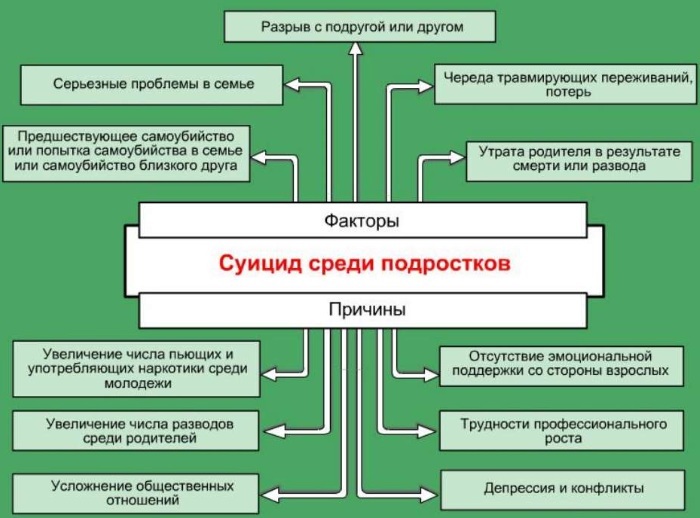
Note. Official statistics provide only approximate data, since it is almost impossible to estimate the true scale of this problem.
Reasons for child and adolescent suicide:
- an unfriendly or abusive attitude from adults;
- violence (physical, emotional, sexual) against a child or adolescent;
- low self-esteem and difficulty in self-determination;
- fear of not justifying the hopes of adults and the child's overestimated claims for success;
- socio-economic destabilization and uncertainty about the future;
- alcoholism and drug addiction of parents or the teenager himself;
- lack of moral and ethical values, lack of a negative attitude towards suicide in the mind of a teenager;
- unrequited love and loss of the meaning of life;
- suicide associated with the death of an idol.
In percentage terms, statistics on the causes of suicide are distributed as follows:
- feelings of unrequited love - 24.32%;
- violation of parent-child relations - 17.57%;
- problems in communicating with peers, teachers, difficulties with study - 14.8%;
- feeling of loneliness - 9.5%;
- hopelessness, unwillingness to overcome difficulties - about 8%;
- drug and alcohol use - 6.7%;
- inability to find their place in life - 4%;
- minute weakness - 2.7%;
- death of a close relative - about 1%.
Suicide methods and the consequences of unsuccessful attempts
The ways of suicide and their consequences are those moments of life that should be considered collectively, and not separately. This is due to the fact that in many cases the attempt to part with life is not fatal. Throughout the history of its existence, mankind has come up with many methods of suicide.
Some of them are less common, for example:
- give yourself up to be eaten by predatory animals;
- detonate an explosive near you;
- commit ritual suicide (hara-kiri);
- do not open the parachute during the jump;
- throw yourself into the crater of a volcano;
- deliberately expose yourself to radiological radiation or specifically contract a fatal disease.
However, there are quite a few common ways to commit suicide.
Hanging
When hanging, important body systems are disrupted in sequence.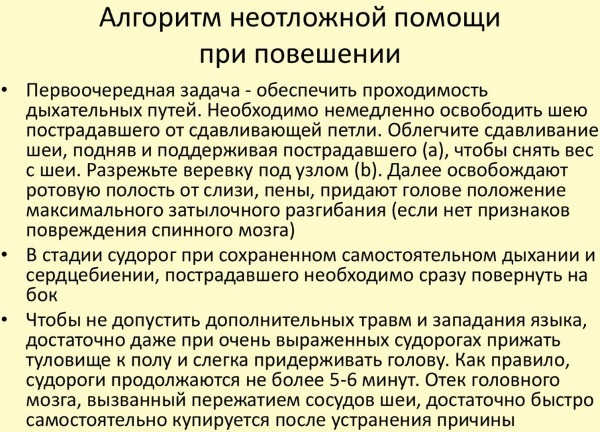
In the first 2-3 minutes. holding the breath, there are irregular movements, blueness of the face, impaired consciousness. Further, these manifestations only intensify, convulsions join them. Often there is an uncontrolled flow of urine, feces, saliva. After cessation of breathing, heartbeats continue for several minutes. In 45%, when suffocating, you can observe a protruding tongue, sandwiched between the teeth.
Very often, the fingers of the hanged are pinched by a loop, which indicates a strong desire of a person to be saved.
With an unsuccessful attempt at suicide, the rescued person experiences injuries of varying severity:
- the cartilage of the larynx, vocal cords and vessels of the neck, which provide cerebral circulation, are damaged;
- tearing of the trachea occurs;
- tongue bites.
Frequent consequences of strangulation are memory impairment, disorientation, and severe headaches. There may also be a decrease in vision, hearing, and in severe cases dementia develops.
If a person is inaccurately removed from the loop, injuries of a different nature may be added: bone fractures, bruises of the face, back.
Drowning
This is an infrequent method of suicide, since it is quite difficult to deliberately commit suicide in this way.
Drowning lasts up to 5-6 minutes. At this time, breathing is reflexively held, which leads to an increase in the lack of oxygen. Therefore, involuntary respiratory movements begin to occur. In this case, water enters the respiratory tract, a cough appears. The secreted mucus mixes with water and air to form a foam that clogs the airway.
If a person fails to ascend, then from a lack of oxygen, loss of consciousness occurs, and respiratory movements are suspended. The body begins to sink to a depth where, under pressure, water enters the respiratory tract deeper and through the ruptured capillaries enters the bloodstream. Blood diluted with water is carried throughout the body. There is a final cessation of breathing.
The desire to escape (and this happens in almost all cases of drowning) is indicated by multiple hemorrhages in the muscles, appearing from strong muscle tension while trying to survive.
Cutting veins and arteries
Cutting veins usually damages not only the blood vessels, but also the tendons. The consequences of such injuries are impaired mobility of the fingers or paralysis of the hands. In addition, gangrene, blood poisoning or other serious complications may develop.
If the carotid artery is damaged, the function of the brain will be maintained for some time by the second carotid artery, but in the cerebral cortex, located on the side of the damaged artery, irreversible processes can begin - the death of nerve cells, which is fraught with the development debility.
Refusal to eat and drink
As a result of prolonged refusal to eat, the work of the heart is disrupted, the starving person is constantly chilly, hair falls out, the skin dries, and adrenal insufficiency may develop. At the last stage, irreversible changes and death occur in all organs.
The process of dying from dehydration can last from a few days to several weeks. This method of suicide has very painful side effects, including seizures, cracked skin and bleeding, blindness, nausea, vomiting, cramping, and severe headaches. Before death, a person falls into an unconscious state.
Self-immolation
This is one of the most painful ways to die. There is an opinion that painful shock quickly sets in and the person dies quickly. For the development of painful shock, it is necessary from several hours to several days. At the same time, the pains are so strong that they cannot be removed even with narcotic analgesics.
If the suicide managed to survive, then the consequences are extremely serious: multiple scars that impede movement in the joints. In addition, the body remains disfigured for life.
Poisoning
It is rather difficult to correctly calculate the lethal dose of poisons and toxic drugs. At the same time, it is important to take into account the individual characteristics of the organism, the psychological state, the interaction between substances and much more. Therefore, poisoning in half of the cases ends unsuccessfully for a suicide.
Those who have managed to take a lethal dose begin to suffocate, then their consciousness becomes "clouded", after which its deep oppression, while voluntary activity is lost, only reflexive activity remains, then the suicide falls into a comatose condition.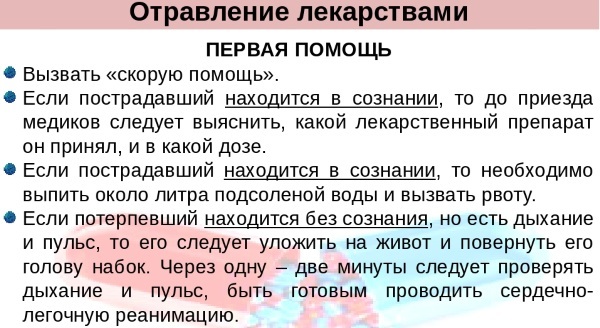
Recent scientific research suggests that, being in a coma, a person feels pain, time drags on very slowly and a few minutes of painful dying can seem like years of hellish torment. A person is usually found in a puddle of vomit and feces.
If antipsychotics were chosen as a poisonous drug, then poisoning can occur in 6-30 hours. At the same time, there is heaviness in the pancreas, constant nausea and debilitating vomiting occur.
In the case of a mild degree of poisoning, lethargy and apathy appear, after which anxiety can occur, light and loud sounds irritate. Then the skeletal muscles relax, and a long sleep sets in. Severe abdominal pain and diarrhea are not excluded.
Poisoning of moderate severity is accompanied by depression of the nervous system, constipation and urinary retention. Possible muscle spasms of the face, convulsions, respiratory failure, cyanosis.
Coma can result from severe poisoning. Shallow breathing, pale skin in cold and clammy sweat, weak heart activity, decreased blood pressure. After this, mild but prolonged seizures usually appear. This state can end in death. In severe poisoning with neuroleptics, death usually occurs only on days 2-3.
With a favorable course, recovery should be expected for 4–5 days, but headaches, mental and hormonal disorders can still torment for a long time. Partial memory loss is possible. Poisoning can be complicated by damage to the kidneys, liver, intestinal obstruction, problems with the bladder, diseases of the heart and blood vessels.
When using concentrated alkalis or acids, a person experiences severe pain from several minutes to several hours, since these substances corrode internal organs. Consequences: narrowing of the esophagus as a result of scarring, leading to obstruction of food. At first, the patient eats through a gastrostomy tube. Operation on the esophagus is possible only after a few months, but it does not always give positive results.
Heart injury
The heart is a small target that is difficult to hit. Therefore, with this method of suicide, the lungs or spine are often damaged (it should be remembered that a violation of the integrity of the spinal cord leads to paralysis).
Even a hit in the heart does not always lead to death, but problems with the cardiovascular system in any case remain with suicide until the end of his days.
Suicide by firearms
If you want to commit suicide, they usually shoot in the head.  A non-lethal shot into the temporal bone, and this happens quite often, can cause a temporal abscess, meningitis, aphasia, hemianopsia, hemiplegia, and general intracranial complications. In total, all this leads to severe brain damage and disability. About half of the people who survived such a shot suffer from a ruptured facial nerve.
A non-lethal shot into the temporal bone, and this happens quite often, can cause a temporal abscess, meningitis, aphasia, hemianopsia, hemiplegia, and general intracranial complications. In total, all this leads to severe brain damage and disability. About half of the people who survived such a shot suffer from a ruptured facial nerve.
Falling from height
Falling even from a very great height does not always end in death. This method of suicide entails multiple fractures of the limbs, spine, pelvic bones, and head. In an immobilized state, a person experiences severe pain, but cannot call for help. If he is not found in time, then he can die in agony for several days.
When falling from a height, a person receives injuries leading to disability:
- severe fractures or amputations of the limbs;
- damage to internal organs, surgery to remove them;
- scars and scars;
- spinal fractures, which may result in partial loss of sensation in the limbs;

- if the spinal cord is injured for the rest of its life, the body is immobilized by paralysis, which makes it impossible to independently control urination and defecation.
Intentionally hitting vehicles and operating mechanisms
Suicide due to a collision, for example, with a train, is responsible for almost 90% of deaths. However, unsuccessful attempts can lead to severe injuries: complex and extensive fractures, amputations, concussion. These injuries result in mental and physical disabilities.
The methods of suicide and their physical consequences leave various injuries, but they all cause equally deep psychological trauma.
How to get rid of suicidal thoughts yourself
Thoughts of suicide are visited by many, but not everyone decides to take such a step. If the condition is not critical, then you can try to get rid of suicidal thoughts on your own.
To look at the world and the current situation with different eyes help:
- change of environment and social circle (positive emotions are given by travel, new acquaintances, which also bring a fresh vision of old problems);
- sometimes you need to find another job that will bring satisfaction (this is not always possible, but it is quite possible to find an exciting occupation);
- A change of place of residence radically changes everything: new neighbors, acquaintances, the view outside the window, the road to work (perhaps life will give new opportunities as well).
In some cases, it is enough:
- remember those to whom you are dear (parents, children, close friends);
- sleep well;
- make yourself a gift;
- limit communication with unpleasant people;
- make plans for the future and stop paying attention to the opinions of others (it will not work to please everyone, you should not even try).
When do you need to seek help?
It is not always possible to get rid of suicidal intentions. They persecute, forcing them to plan their departure from life. In this case, you should definitely seek help from specialists (psychologists, psychiatrists), believers can receive the necessary help from clergy.
In case of emergency, you can use:
- helplines;
- crisis hospitals;
- service of emergency psychological assistance (there are such services under the Ministry of Emergencies).
You can always leave this world in any way you choose, but you won't be able to return (even if you really want to). It is not for nothing that most suicides, before dying, make attempts to save their lives, and their last words are usually words of regret about what they have done. We should not forget about the consequences remaining after unsuccessful suicide attempts. They can be so terrible that all the problems before that seem like little things.
Author: Irina Zhuravka
Suicide videos
TOP 5 best deaths:

